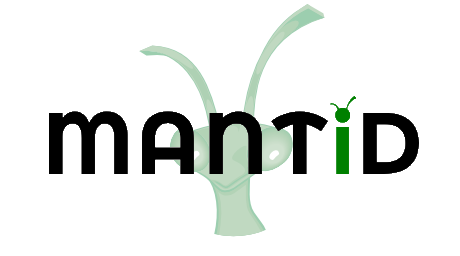Python 3¶
This is now the default configuration but we currently retain the ability to build against Python 2.
Python 2 has an end-of-life date set for 2020 and now that most third-party packages support both 2 and 3 we are starting to think about a migration strategy for Mantid.
Building Against Python 3¶
For Linux/macOS ensure dependencies are update to date. On Windows all of the required packages are in the third-party bundle that will be fetched for you.
Warning
Do not install python packages via pip. Install packages only from the system repositories.
To build from the command line run cmake as standard but with the additional option -DWITH_PYTHON3=ON.
To build from the GUI set the source and build directories as usual
but before clicking configure click “Add Entry” and add an entry with the name WITH_PYTHON3 of type BOOL
and ensure the Value is checked. Now proceed to configure and generate as usual.
Supporting Python 2 and 3¶
Python 3 introduces many exciting new features. For a full description see the official Python 3 changes document. For a shorter overview see here or here.
Some features of Python 3 have been backported to Python 2.x within the __future__ module. These make it easier to write code that is compatible with both versions.
This cheat sheet provides helpful examples of how to write code in a 2/3 compatible manner. Where an
option is given to use either the six or
future (not to be confused with __future__!) modules
then six is used.
All new code should be written to be compatible with Python 2 & 3 and as a minimum the first import line of the module should be:
from __future__ import (absolute_import, division, print_function)
It is quite common to also see unicode_literals in the above import list, however, when running
under Python 2 Boost.Python will not automatically convert a Python str to C++ std::string
automatically if the string is unicode. When running with Python 3 Boost.Python will do this
conversion automatically for unicode strings so this is in fact not a huge issue going forward.
Migrating From Python 2 to 3¶
One way to migrate a file from python 2 to 3 is as follows…
Warning
2to3 script you will need to start the command-prompt.bat in the build directory and run %PYTHONHOME%\Scripts\2to3Run the following script to run the python 2 to 3 translation tool and rename the file to filename.py.bak
2to3 --no-diffs -w filename.py
mv filename.py{,.bak};
Run one of the following commands to append the import statement listed above.
awk '/(from|import)/ && !x {print "from __future__ import (absolute_import, division, print_function)\n"; x=1} 1' \
filename.py.bak > filename.py
or
sed -i '0,/^import\|from.*/s/^import\|from.*/from __future__ import (absolute_import, division, print_function)\n&/' filename.py
Check each changed block,
- If any change has replaced
xrangewithrangethen addfrom six.moves import rangeto the imports list - If any change has replaced
ifilterfalsewithfilterfalsefromitertoolsthen replace a statement likefrom itertools import filterfalsewithfrom six.moves import filterfalsein the imports list. There are more cases like this documented here. - If any change has replaced
for k, v in knights.iteritems()withfor k, v in knights.items()then addfrom six import iteritemsto the import list and update the replacement tofor k, v in iteritems(knights).
In some cases like range, pylint will complain about Replacing builtin ‘range’ or similar.
Make sure to put the proper ignore statement on that line using #pylint: disable=redefined-builtin.
Check the code still runs as expected in Python 2.
Note
2to3 will try to keep the type of the objects the same. So, for example range(5) will
become list(range(5)). This is not necessary if you use it just for iteration. Things like
for i in range(5) will work in both versions of Python, you don’t need to transform it into a
list.
